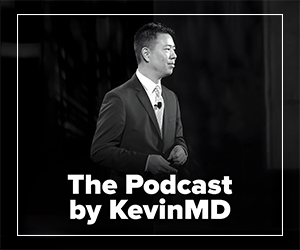Functional precision oncology is taking precision medicine to the next level. It is changing the way we fight cancer by testing a patient’s live tumor outside the body to determine the treatments most likely to work. This approach promises to double cancer response rates, improve survival, and reduce costs. It’s personal, data-driven, and long overdue, yet most cancer centers still don’t offer it.
Even many doctors are unaware that the standard tools at leading institutions might not help your oncologist determine the most effective treatment specifically for your cancer. Pathology—based on stains like H&E—identifies your cancer type but doesn’t predict treatment responses. Thousands of studies report average drug responses for various cancer types, but group statistics can’t reveal what will work specifically for your tumor.
Consider pancreatic cancer. If you’re relatively fit, you’ll likely receive FOLFIRINOX, effective in about 32 percent of patients. If not, the alternative is gemcitabine with Nab-paclitaxel, which works in about 24 percent. Neither pathology nor your oncologist can predict which treatment—if any—will be effective. When treatments fail, survival remains poor, and patients suffer significant side effects with minimal benefit. It’s a costly, uncertain process when time is critical.
Precision medicine, specifically genomic sequencing, aims to identify mutations to match targeted therapies. However, biology is more complex than targeting a single mutation. Even in HER2-positive breast cancer—a genomic success story—adding Herceptin increases response rates from 29 percent to 45 percent, an improvement but far from curative.
According to Keith Flaherty, professor of oncology at Harvard and lead author of the National Cancer Institute’s MATCH trial, only one in four cancer patients has an actionable mutation linked to an FDA-approved targeted drug. While the conventional precision medicine approach using genomics has helped many, it lacks truly personalized solutions for most.
Functional precision oncology offers a different approach. Similar to antibiotic sensitivity testing, it exposes a live tumor to various drugs, measuring actual effectiveness. Sidney Salmon and Anne Hamburger pioneered this method in 1978 by culturing tumor cells and linking lab drug responses to clinical outcomes. NIH-backed efforts led by Daniel von Hoff further refined this approach, achieving predictive accuracies exceeding 80 percent, though limited by slow turnaround times and challenges with low-grade tumor cultures.
Larry Weisenthal later developed the differential staining cytotoxicity (DiSC) assay, staining live and dead tumor cells to identify drug effects. It proved effective across various cancers and correlated well with patient outcomes but required significant labor, large tumor samples, and could only test a few treatments simultaneously. Still, it significantly benefited patients by identifying effective therapies.
In the 2000s, next-generation sequencing (NGS), conducted on preserved tissue, gained popularity and functional profiling fell on the wayside. Easier integration into pathology workflows, drug approvals tied to mutations, and pharmaceutical incentives led NGS to dominate, bolstered by inclusion in NCCN guidelines. Despite widespread adoption, oncologists often find genomic reports overwhelming and clinically ambiguous.
Today, functional precision medicine is resurging. Leading research centers and NIH-funded organoid labs demonstrate that ex-vivo drug testing can reliably predict clinical responses. In one pivotal study, glioblastoma patients lived significantly longer when treatments were guided by functional results—outperforming current experimental drugs. Functional precision oncology doesn’t replace genomics; instead, it complements traditional genomic testing and advances precision medicine to the next level.
Yet, adoption remains slow. Functional precision oncology hasn’t been widely integrated into standard NCCN treatment guidelines. Most oncologists strictly follow these NCCN guidelines, often dismissing tests not explicitly listed. Hospitals also may restrict external tissue testing. Health care systems favor standardization and efficiency over innovation and individualized care due to financial incentives, administrative convenience, and the complexities involved in adapting new, personalized methodologies into established practices. Consequently, many patients are unaware that functional profiling may even be an option.
If you have cancer and seek optimal outcomes, especially if current treatments aren’t effective, take initiative. Educate yourself about functional precision oncology. Engage your oncologist. Advocate actively. You may encounter resistance, particularly at prestigious institutions renowned for research but slow in adopting innovation into clinical care. By demanding clarity and refusing vague answers, you may be able to double your chances of receiving the treatment that is most effective for you, avoiding unnecessary side effects, and enhancing your quality of life.
Chris Apfel is a physician and clinical researcher with over 100 published papers, widely recognized for his data-driven contributions in anesthesia and oncology. He developed the Apfel score, a clinical tool used globally to predict postoperative nausea and vomiting, which has been validated in multiple studies. Dr. Apfel currently serves as chairman and CEO of SageMedic Corp., a company at the forefront of functional precision medicine in oncology.
Under his leadership, SageMedic Corp. is revolutionizing cancer treatment outcomes through the SAGE Oncotest™, an AI-augmented, in-vitro, 3D microtumor platform. This technology uses a patient’s live cancer tissue to predict drug resistance and identify the most effective treatment within 7 to 10 days. The test more than doubles a patient’s current likelihood of receiving the best therapy, improving both life expectancy and quality of life.
Dr. Apfel’s academic career includes appointments at prominent institutions. From 2003 to 2006, he served as assistant professor in the Department of Anesthesia and Perioperative Medicine at the University of Louisville. In 2006, he joined the University of California, San Francisco (UCSF) as associate professor in the Department of Anesthesia and Perioperative Care. Since 2010, he has also served as associate adjunct professor in the Department of Epidemiology and Biostatistics at UCSF.
To learn more or get in touch, connect with Chris Apfel, MD on LinkedIn, follow SageMedic Corp on LinkedIn, or visit the SageMedic Facebook page.





















![Collaborative partnerships save rural health care from collapse [PODCAST]](https://kevinmd.com/wp-content/uploads/Design-3-190x100.jpg)
